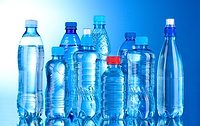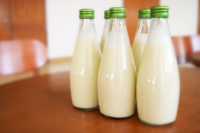Equipment Maintenance and Food Safety: What You Need to Know

Ask most plant managers about why manufacturing equipment maintenance is important, and you’re likely to hear about downtime and cost control. Food safety, unfortunately, rarely comes up.
Yet along with sanitation, allergen control, food traceability and the like, equipment maintenance is a critical factor in safe food product production. As a part of Current Good Manufacturing Practices (CGMPs), the U.S. Food and Drug Administration (FDA) has mandated equipment maintenance as one of the risk-based preventive controls with which food manufacturers must comply. Equipment maintenance and calibration, as a function of CGMPs, is also considered key components of the GMP Prerequisite Program required by the U.S. Department of Agriculture for any Hazard Analysis and Critical Control Points system.
As FDA continues to focus on prevention instead of reaction and monitoring as the guiding principle for food safety, production equipment maintenance will be increasingly important—and face greater scrutiny. Preventive maintenance (PM), as well as predictive maintenance (PdM), will soon replace reactive maintenance as the standard in the CGMP environment.
When manufacturing equipment is not kept in good repair and condition, it can be a greater potential source of microbiological and physical contamination. Debris from worn or broken parts can contaminate the production line—or even enter the product directly.
Flaking paint, excessive lubrication and rust can all create hazards. Furthermore, equipment not meeting operating parameters can impact product quality as well as safety. Critical Control Points can be missed, processes can be interrupted, and unwanted substances and chemicals can enter the production stream. Studies show the age of equipment at most food processors exceeds 20 years—an indication that proper maintenance practices are more important than ever.
Maintenance: An Evolving Discipline
Any discussion of best practices for equipment maintenance has to begin with the status quo: a reactive, run-to-failure strategy. While reactive maintenance has its place in some instances—if for example, the cost of maintenance is greater than the cost of unexpected failure—this practice is both short-sighted and, unfortunately, all too common.
A better alternative, and one that is gaining momentum, is PM, which requires inspection, diagnostics, service and parts replacement, according to timely and well-planned maintenance schedules. It works especially well in food manufacturing. For example, in situations where multiple processing lines are coupled with packaging/filling lines that are run intermittently, there are natural opportunities for PM when lines are not in operation.
Certain challenges of PM, despite its many advantages, are worth noting. Because work is done according to schedule instead of need, tasks may be done where wear has not occurred. Also, if production is curtailed due to drops in demand, technicians may sometimes continue to service equipment where the need is not evident. Finally, PM may take technicians away from equipment where a failure is imminent—or has occurred.
For reasons such as these, PdM is the strongest of all maintenance disciplines. PdM is a condition-based approach to machine reliability that identifies, measures and earmarks factory equipment for maintenance before a failure occurs. This is accomplished through a range of innovative diagnostic and sensing technologies including ultrasound detectors, thermography and vibration analysis, among others.
PdM is extremely effective at anticipating failures and minimizing downtime. Thanks to the growth of the Internet of Things, supported by sensors that are becoming less expensive and increasingly sophisticated, problems can be identified at a premature phase. Bluetooth connectivity allows technicians to monitor equipment in real time, in order to head off issues before they impact either production or food safety.
While the effect of PdM on food safety is measurable, facilities quickly experience other efficiencies. Fewer specialists are required to service machines, and less time is wasted on needless maintenance. Service tasks can oftentimes be scheduled when they are least disruptive and most cost-effective (and line personnel are less likely to be left waiting while repairs are made). Best of all, PdM supports better reliability engineering; through root cause analysis, engineers can determine and design equipment alternatives that reduce downtime and eliminate repeated failures.
Implementing a PdM program isn’t as difficult as one might think. Many of the same disciplines used in PM are transferrable; in fact, if a plant is currently following a PdM regimen (as enumerated below), combining PM and PdM often achieves the best results.
Review and analyze your current maintenance performance to determine the economic benefits, as even small changes can yield significant returns.
Identify the critical machines that, if offline, will slow or even shut down operations.
Determine the need for critical spare parts.
The goal is to maximize efficiency. If a part is readily available from a vendor, for example, it may not be necessary to carry it in inventory.
The right mix of PdM and PM can be determined through failure analysis. Reliability-centered maintenance (RCM) is a structured approach to identifying machine subsystems in order to establish safe minimums for maintenance. Utilizing RCM is a great way to roll out PdM effectively, where potential failures will have the greatest negative impact.
Outside Knowledge Is Beneficial
In all these initiatives, an independent maintenance services partner can be invaluable. A skilled specialist organization will shorten the learning curve, delivering insights and best practices from other industries as well as other food producers. Managers are often surprised to see just how effective and beneficial non-food maintenance strategies can be in a food production facility.
With the speed and frequency of new products—not to mention more rigorous food safety standards—food processors must constantly examine ways to improve their manufacturing practices. It’s important to include equipment maintenance in this effort. With a strong, coordinated program in place, managers will find their facility becoming healthier, more profitable and, ultimately, safer.
Jeremy Wright is director of product management for Advanced Technology Services, Inc. He can be reached at jerwrigh@advancedtech.com.
Looking for a reprint of this article?
From high-res PDFs to custom plaques, order your copy today!





